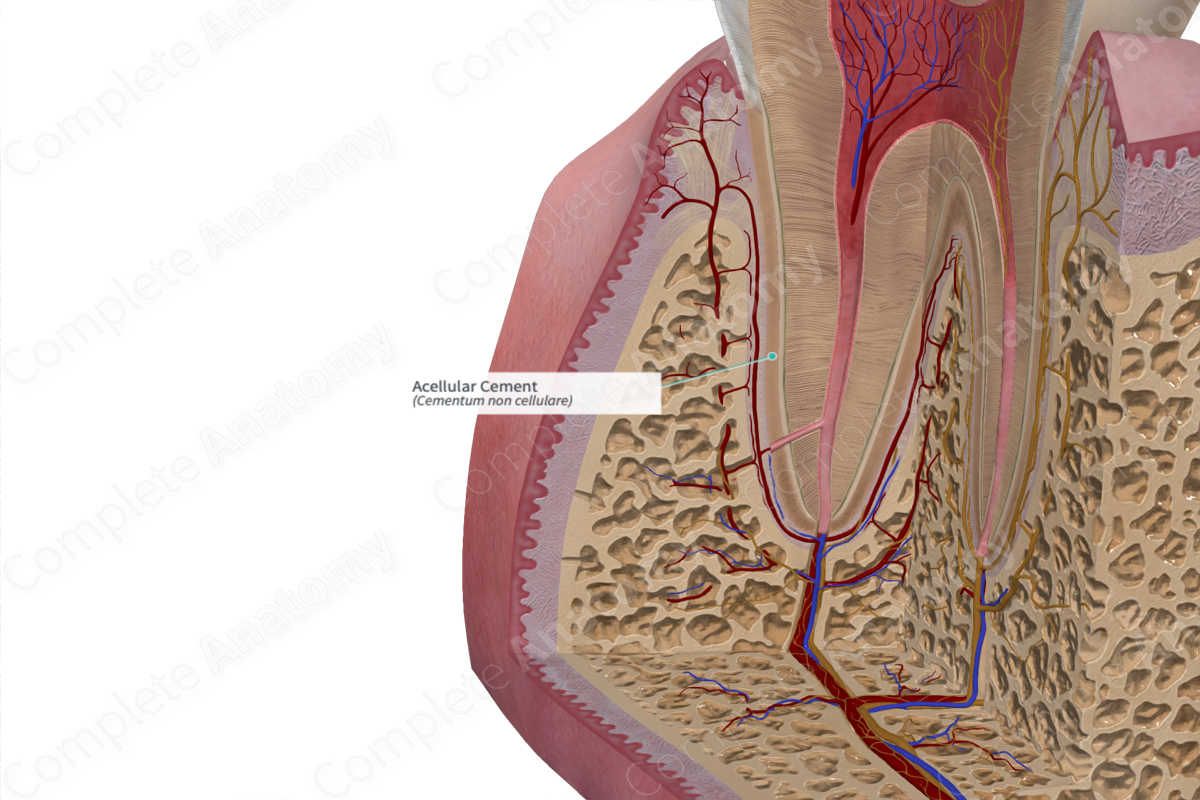
Quick Facts
The acellular cement is the cementum without cellular components that covers one third to a half of the tooth root adjacent to the cementoenamel junction; it is usually opposed by a layer of cellular cementum (Dorland, 2011).
Related parts of the anatomy
Structure and/or Key Feature(s)
Acellular cement is generally comprised of extrinsic fibers embedded in calcified cement, with no cells present (Foster, 2017).
Acellular cement can be further classified depending on the presence of inserting collagen fibers from the periodontal ligament (Sharpey’s fibers). Acellular, afibrillar cement describes an indistinct granular layer devoid of inserting collagen fibers or cementocytes. It is essentially a layer of mineralized matrix exclusively produced by cementoblasts.
Acellular extrinsic fiber cement, on the other hand, is characterized by well-defined collagen type I fibrils, which are part of the densely packed Sharpey’s fibers. This type of acellular cement extends throughout the coronal portion of the root (Vishwakarma et al., 2014).
Anatomical Relations
Acellular cement is described as a thin layer of cement that covers the cervical root of the tooth.
Function
The primary function of acellular cement is to anchor principal fibers of the periodontal ligament to the cervical root (Yamamoto et al., 2016).
References
Dorland, W. (2011) Dorland's Illustrated Medical Dictionary. 32nd edn. Philadelphia, USA: Elsevier Saunders.
Foster, B. L. (2017) 'On the discovery of cementum', J Periodontal Res, 52(4), pp. 666-685.
Hand, A. R. and Frank, M. E. (2015) Fundamentals of Oral Histology and Physiology. Wiley.
